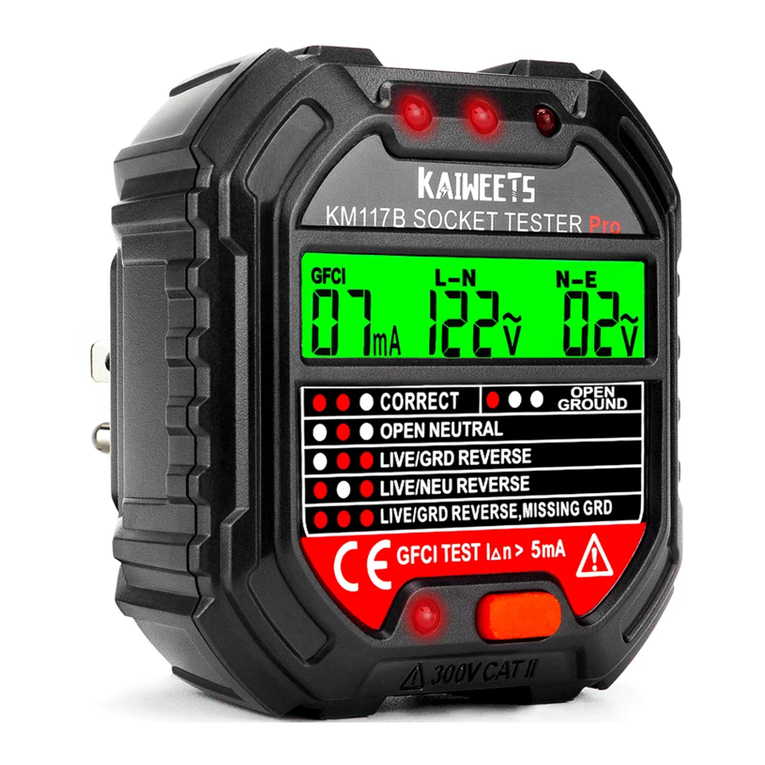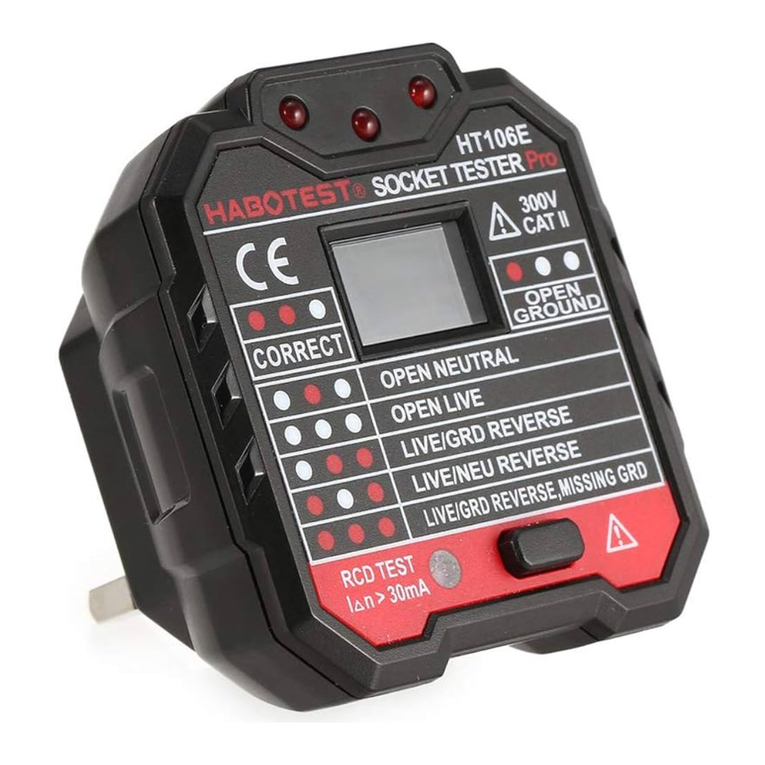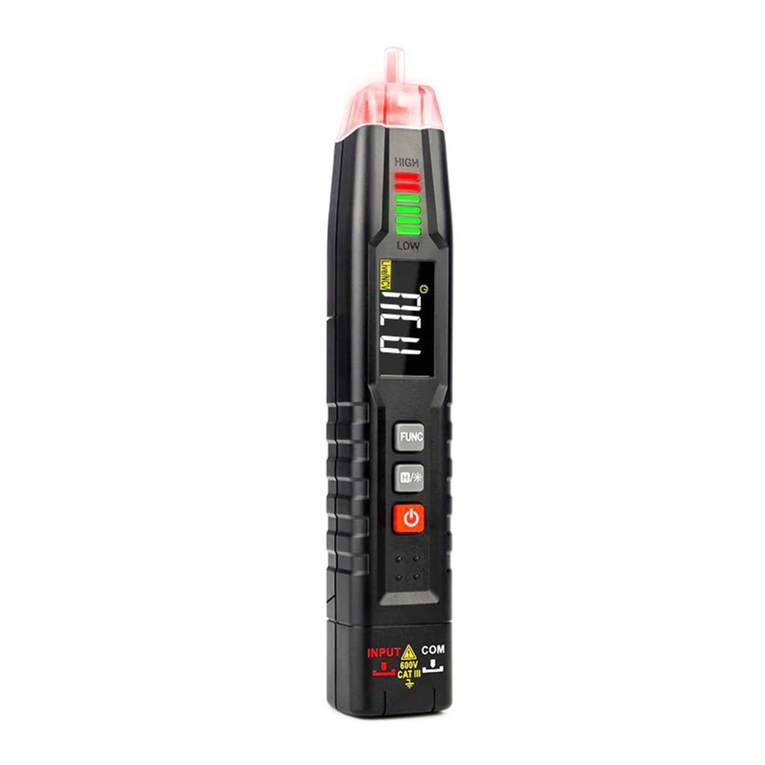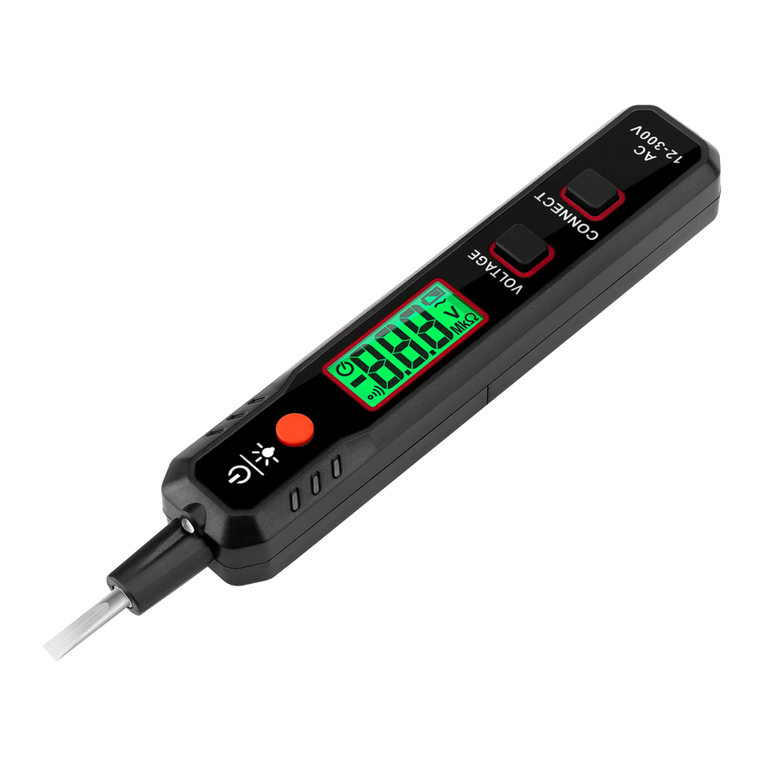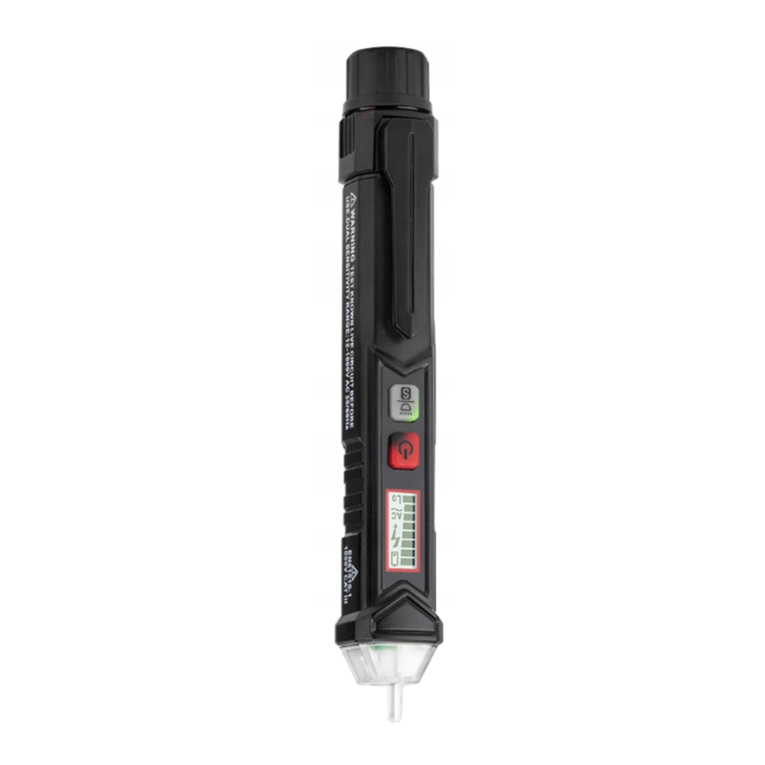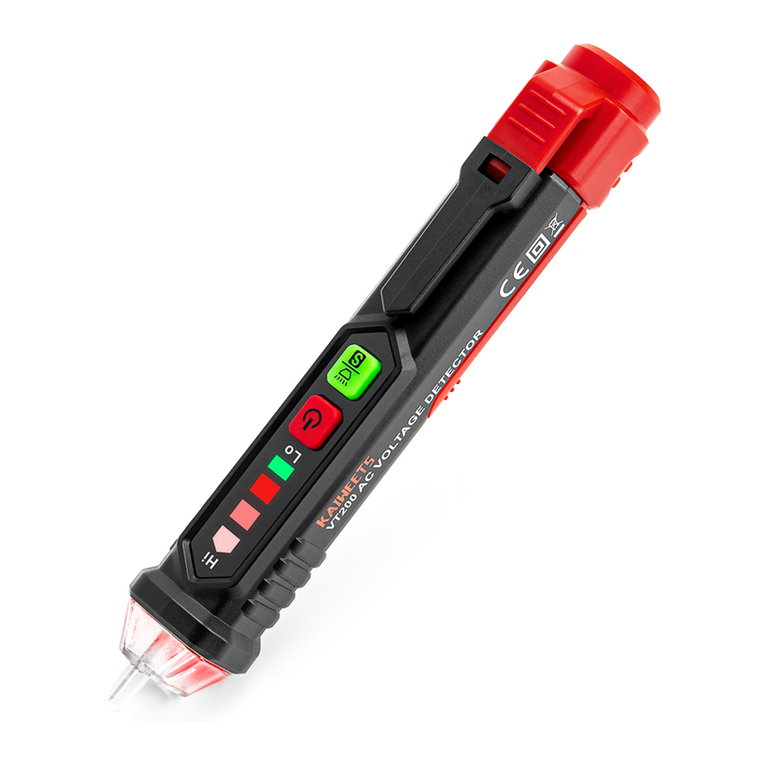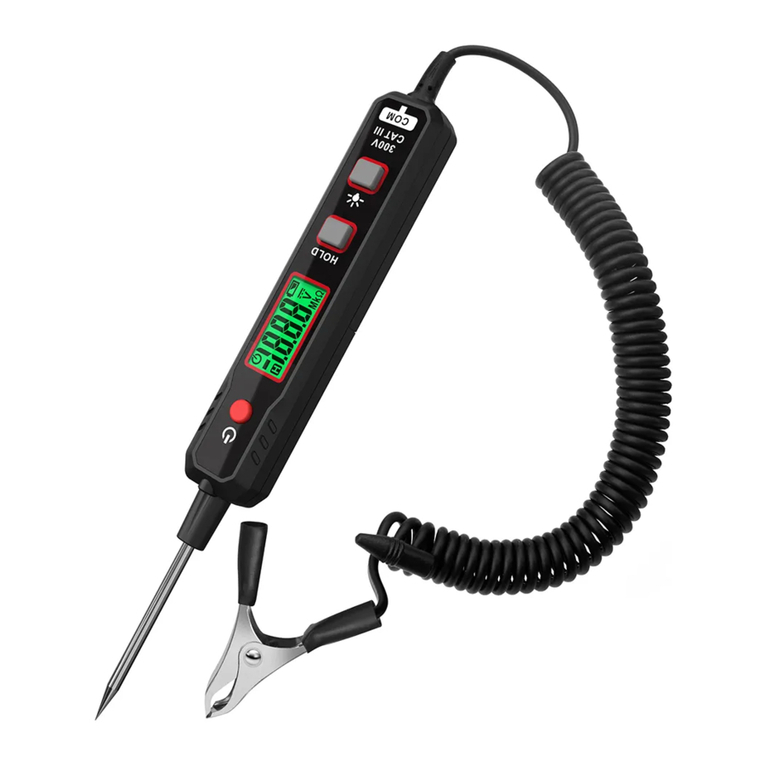LED Flashlight
Press and hold the green button for more than 2 seconds to turn the LED
light on and off. If no button on the tester is pressed and no voltage signal is
detected. After 3 minutes, it will automatically shut down to save power.
Low battery indicator
If the battery voltage is less than 2.5 volts, the display will show the " "
symbol. If the battery voltage is less than 2.3 volts, the tester automatically
turns off.
Technical specifications
Voltage: ........................................ ............................AC 12~1000V,50/60Hz
Operating temperature:.......................................................................0~40℃
Storage temperature:.....................................................................-10~50℃
Humidity:.............................................................................................≤95%
Operating altitude:............................................................................≤2000m
Security level:..........................................CE, CAT III 1000V, CAT IV 600V
Batteries:....................................................................................2×1.5V AAA
Battery replacement
Rotate the battery cover off body, remove the batteries, and insert
the positive terminal of the new battery toward the tip of the tester.
tester to test the electricity to avoid electric shock.
Cleaning
Use only a soft, slightly damp cloth to clean the device, never use chemicals
or abrasives, alcohol, ammonia or cleaners containing solvents to clean
tester. Make sure that the device is completely dry before use.
Three years warranty
The KAIWEETS electronic test and measurement devices are guaranteed
for three years from the date of purchase.
After-sale: support@kaiweets.com
EN18100V10












